I've always heard that Stockholm is beautiful - one of the most beautiful of Europe's capitals in fact - and this reputation is very well deserved.
The buildings in Gamla Stan (Old Town) are warmly colourful and interestingly decorated with different kinds of iron bolsters...
The streets are curvy and narrow, packed full of artisan shops and cozy restaurants, many with candles in the windows...
Little alleyways lead down to pubs and less-touristy shops...
Surprisingly steep hills jut out from the mostly flat landscape - practically a hike considering the roughly cobbled streets.
* * *
My prescribed-culture choice for Stockholm was the Nobel Museum:
Alfred Nobel invented dynamite in 1867, when he was 30 years old. He actually felt that his explosives would preserve world peace because he couldn't imagine anyone daring to use such terrible new weapons for warfare. He had over 300 patents approved for inventions ranging from artificial silk to aluminum boats.
In his final will (1895), he specified that the wealth he accumulated in his lifetime was to be financially managed and used to reward "good ideas."
The prize comes with 10 Million SEK.
Each Nobel Prize (physics, chemistry, medicine, literature, economics and peace) is awarded on December 10th of every year in Stockholm, with the exception of the Peace Prize, which is administered by and awarded in Oslo (this was stipulated by Nobel but he didn't offer any clear reason as to why). December 10th is a national holiday in Sweden and Norway.
The museum is so well designed and incredibly informative - everything from the history of the award and Nobel's life, to the actual medals and certificates, to a chronology of the awards through the 20th century, to interviews with and acceptance speeches by award recipients.
The 1993 Nobel Prize for literature was awarded to Toni Morrison. Her acceptance speech actually gave me chills.. The smooth rhythm of her voice, her precise enunciation, the wavering in her breath, even the very words she used: Profound, Nurture, Pantheon, Blessing, Precipice, Sisters. She spoke of writers "mining, sifting, polishing languages for illuminations none of us has dreamed of" and concluded by expressing gratitude and asking her listeners to share what was for her a moment of grace. It was beautiful.
I also listened to Martin Luther King Jr.'s acceptance speech for the Nobel Peace Prize, which was equally effectual. His voice vibrated with strength and conviction, absolutely thick with metaphor. You can hear the preacher-roots in his inflection, in how his words hang suspended for a moment. When he said things like "civilization and violence are antithetical concepts," it is not a theory or a hope, it is a command.
A few interesting tidbits: Einstein got the Nobel prize in physics for his discovery of the photoelectric effect rather than the theory of relativity, which was still under dispute in 1922. In 1964 Jean Paul Sartre voluntarily declined a Nobel Prize because he felt that all prizes unavoidably make the recipient less free.
An apt quote: "Every great scientific truth goes through three stages. First, people say it conflicts with the Bible. next they say it had been discovered before. Lastly they say the always believed it." Louis Agassiz 1807-1873.
"You say I am a riddle - it may be, for all of us are riddles unexplained." Alfred Nobel.
* * *
The changing of the guard at the Royal Palace is quite the affair - about 10 minutes of introductory info, following by the ceremony, then a performance by the Royal band. Hinesh and I were glad to be sitting down.




The next day, we went to Sweden's oldest town - Sigtuna.

The street layout is the same as it was in 980.



Tiny houses, wood planks...burnt orange and red ochre.

One adorable little phone booth.

The town also has a few rune stones still standing, which I think is fantastically cool. This one is from the 11th century - it was erected by Ofeg in memory of his two sisters, Thora and Rodvi.

This one is also 11th century, set up by and for people with cool Nordic names like Sven, Frödis and Ulv.

And this was erected by Anund in memory of...himself. Ha. Cocky bastard.

The town also has houses that look like castles, pretty church-garden gates and the requisite touristy cafe's...




Cats sleeping in windows...I love sleepy little towns.

At the waterfront, there are paths for walking and a little mini-golf course (the Swedes seem to really like mini-golf).

Guess what else they like in Sweden? Berries! Swedish ones!
 Or maybe it's only the strange Canadian chicks who get excited about these silly candies and insist on calling them Swedish berries (like back home) instead of just berries. Who the hell knows what they're called here anyway - no doubt something I can't even pronounce.
Or maybe it's only the strange Canadian chicks who get excited about these silly candies and insist on calling them Swedish berries (like back home) instead of just berries. Who the hell knows what they're called here anyway - no doubt something I can't even pronounce.Later that evening, we went down to this fantastic little gelato shop (my second visit, I must admit) called Green Cow Gelato. It's next to Vasabron, on your way to Gamla Stan.

She lived in Italy for two years, where she learned this delicious art. Different flavours are made fresh everyday - mango; cookies and cream; pear, honey and walnut; peanut butter cup; apple; chocolate mocha - all with fresh ingredients. Best gelato I've had in Europe yet. Seriously.
And how cute are they? This photo was taken on their one-year anniversary.

After that, we found the inaugural exhibition of Signspotting - a hilarious collection of signs from around the world.
I posted every picture I took, so enjoy!




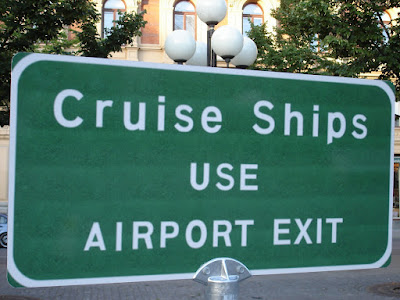





























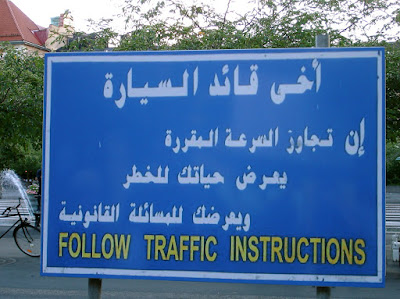

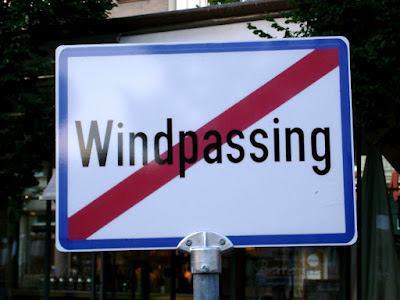




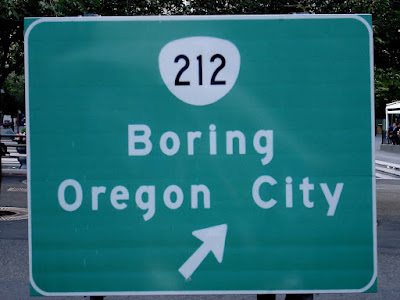














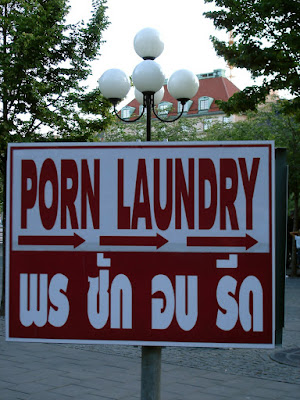




















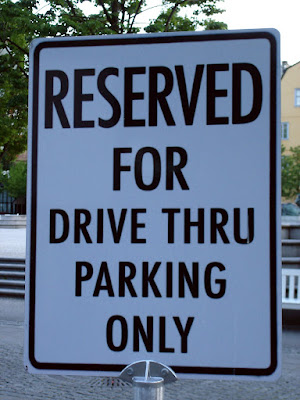






























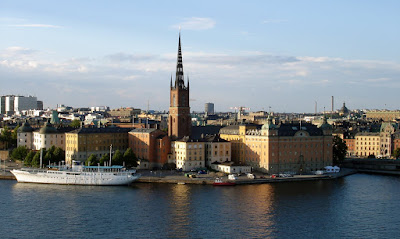




















1 comment:
i nearly pissed myself, laughing at these signs!!
oh, and nice to see you breaking out that hat...i love that hat....
hugs!
Post a Comment